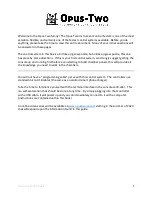
Tel: 886.909 602 109 Email: [email protected]
24
Hard keys on the front panel and soft keys of the menu are described in the following forms:
(1) Hard key: [XXX], XXX denotes the name of the hard key.
(2) Soft key: [XXX], XXX denotes the name of the soft key
If a soft key corresponds to several parameters, , the selected value will be framed with a rectangular box, which
indicates that the state is valid. For example: [Average ON OFF] that “channel average” is “ON”.
1) Zeroing and calibration
After the instrument is used for the first time or the power meter sensor is replaced, it is recommended that the power
meter should be zeroed and calibrated. Connect the power sensor to the channel interface on the front panel of the main
unit using a multi-core cable. Connect the power meter to the power supply and wait until the indicator lamp on the
bottom right corner of the front panel turns yellow to indicate proper function of stand-by power. Press the power button
on the front panel, observe that the power indicator lamp on the front panel turns green and the display backlight lights
up, and wait for about 40 s to display the power-on status interface.
Set the microwave power meter as follows:
Step 1.
Press the [Cal] key on the front panel to access the calibration menu. Select [Channel A] > [Zero + Cal]. Zeroing
and calibration begins. The screen displays the “Zero calibration in progress, please wait...” dialog. A scroll bar at the
bottom indicates the progress of the calibration. The S71710 series CW power sensor, if used, should be connected to the
calibrator for calibration, but the S81702 or S81703 series peak power sensor has no such demand as they are built-in
with a calibration circuit.
Step 2.
Wait for the calibration to finish. When the dialog disappears, this indicates that the calibration is complete. If no
errors are shown at the bottom of the screen, then the instrument is functioning properly. If an error message is shown at
the bottom of the screen, If this is the case, please contact our service center via the service hotline in this manual. We
will make repairs and replacements rapidly based on individual circumstances.
2) Self-test
Self-test is not necessary every time the instrument is turned on. It is only performed when malfunction is suspected in
the instrument.
Step 1.
Press the [Menu] > [System] > [Service] > [Test] on the front panel to access the test menu;
Step 2.
Select the [Self-test] from the soft menu to access the self-test interface;
Step 3.
Run self-test. The results of the test will be displayed on the screen when it is complete. Observe the test results:
if the test has passed, then the instrument is functioning properly. If any test item has failed, it indicates a malfunction of
the instrument in that specific area. If this is the case, please contact our service center via the service hotline in this
manual. We will make repairs and replacements rapidly based on individual circumstances.
After successful completion of the above two steps, the instrument is ready for operation.
















































